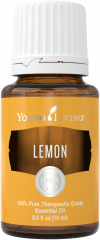Shared by Kathleen USA Diamond
------
When I began learning about essential oils 11 years ago it was my chemist father, Dr. David O'Brien, who helped me to understand WHY they worked. He read Dr. David Stewart's book, Chemistry of Essential Oils Made Simple, then explained them in a way I still remember them to this day - PSM.
-----
Chemistry of Essential Oils
Essential oil molecules have three very important characteristics::
::Essential oil molecules have
the SIZE to be able to pass through cell membranes
::Essential oil molecules have
the SHAPE and ability to change shape as they enter the cell
::Essential oil molecules have
a God-created Positioning System - a GPS
Every cell of the human body has a control center called the nucleus. Housed inside the nucleus is our DNA. Which, like a blueprint, contains all the molecular instructions needed for building the entire body. The nucleus is walled in by a double membrane. A fluid-filled space, or moat, is sandwiched between the two membranes.
Young Living Essential Oil molecules have the created ability to pass through the first membrane, swim across the moat, and then penetrate the second membrane. Once they have entered the nucleus, they contain the programmed instructions necessary to completely change the nucleus, which in turn has the ability to reproduce a new healthy cell.
PHENOLPROPANOIDS
Phenolpropanoids clean and purify cell receptor sites. The outside wall of a cell membrane is covered with toxic molecules. These toxic molecules prevent the wounded or diseased cell from receiving nutrients and releasing toxic waste products. The phenolpropanoids and phenols present in essential oils remove these toxic molecules and allow waste products to be eliminated and healthy essential oil molecules travel into the cell. They also attack invading microbes and parasites. There are 100 varieties of phenolic molecules found in essential oils. Phenolpropanoids are found in clove, peppermint, fennel, basil and wintergreen.
SESQUITERPENES
Sesquiterpenes are extraordinary molecules that have the ability to stop the growth of wounded cells. They have the capability of passing through the cell’s outside membrane wall followed by a migration across the wounded cell toward the cell’s nucleus. The nucleus of a cell is protected by a double-walled membrane. Sesquiterpenes have the molecular passcode that enables them to enter the double-walled membrane. Once inside the nucleus they identify the wounded DNA molecules and stop them from growing! Then they erase the flawed memory inside the cell. There are 10,000 varieties of sesquiterpenes found in essential oils. Sesquiterpenes can be found in myrrh, vetiver, ginger, cedarwood and patchouli.
MONOTERPENES
Monoterpenes have the impressive ability to mend and restore original DNA memory. If the DNA in the wounded cell can be saved, the monoterpenes will reprogram the original DNA memory and cellular functions. Monoterpenes have the molecular intelligence to reset the DNA polymer strands to their “factory-created settings.” There are an estimated 2000 varieties of monoterpenes found in essential oils. They support and enhance the therapeutic benefits of other essential oil molecules. Monoterpenes are found in grapefruit, orange, grand fir, lemon, pine and frankincense essential oils.
Information adapted from Dr. David Stewart's book "The Chemistry of Essential Oils made Simple" explained by Pour on the Power / Wise House Oils chemist, Dr. David O'Brien. All gentleman have resources at [DiscoverLSP.com.](http://discoverlsp.com/?fbclid=IwAR3eD_0x71uQTs3mDeGJpRV2R99Xl5ba2MTLvk78xuIcwoIRzvDF4TBc1E0) (Dr. O’Brien’s DVD’s must be requested via LSP customer service).





































Social Icons